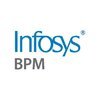Business Process Analyst
Business Process Analyst Interview Questions and Answers

Asked in Accenture

Q. 1. What is OTC ? 2. What is Invoice & what are the key things we need to check while raising the invoice . 3.What’s the quality parameter in billing. 4.Challenges while raising the invoice . 5. What is debit/cr...
read moreOTC stands for Order to Cash, which is the process of receiving and fulfilling customer orders.
OTC is a business process that involves receiving and processing customer orders.
It includes activities such as order entry, order fulfillment, and order invoicing.
OTC aims to ensure timely and accurate delivery of products or services to customers.
It involves coordination between various departments like sales, operations, and finance.
OTC process can be optimized to improve efficie...read more

Asked in Acies

Q. Have you worked with Azure Data Factory, and what are its key advantages?
Azure Data Factory is a cloud-based data integration service for creating data-driven workflows.
Scalability: Easily scale to handle large volumes of data, such as processing millions of records from IoT devices.
Data Movement: Supports data movement across various sources, like moving data from on-premises SQL Server to Azure Blob Storage.
Integration: Seamlessly integrates with other Azure services, such as Azure Databricks for data transformation.
Monitoring: Provides built-in...read more

Asked in Acies

Q. What are the available technologies for dynamic data management?
Dynamic data management technologies enable real-time data processing and analytics for improved decision-making.
Cloud Computing: Services like AWS and Azure provide scalable data storage and processing capabilities.
Data Lakes: Technologies like Apache Hadoop allow for the storage of vast amounts of unstructured data.
Real-Time Data Processing: Tools like Apache Kafka enable the processing of streaming data in real-time.
NoSQL Databases: Databases like MongoDB and Cassandra sup...read more

Asked in Acies

Q. Have you worked on data replication technologies?
Yes, I have experience with data replication technologies, ensuring data consistency and availability across systems.
Implemented database replication using technologies like Oracle Data Guard for high availability.
Utilized Apache Kafka for real-time data streaming and replication between microservices.
Worked with AWS Database Migration Service to replicate data from on-premises databases to the cloud.
Experience with SQL Server Replication for synchronizing data across multipl...read more

Asked in Anblicks

Q. Explain the difference between ETL and ELT.
ETL extracts, transforms, and loads data, while ELT loads data first and transforms it later, often in a data lake.
ETL (Extract, Transform, Load) processes data before loading it into the target system.
ELT (Extract, Load, Transform) loads raw data into the target system and transforms it afterward.
ETL is typically used in traditional data warehousing environments.
ELT is more common in cloud-based data lakes, allowing for greater flexibility.
Example of ETL: Data from multiple ...read more

Asked in Finoability

Q. Tell me something about yourself.
I am a detail-oriented Business Process Analyst with a passion for optimizing workflows and enhancing operational efficiency.
Over 5 years of experience in analyzing and improving business processes.
Successfully led a project that reduced processing time by 30% through workflow automation.
Skilled in using tools like BPMN and Lean Six Sigma methodologies.
Collaborated with cross-functional teams to identify bottlenecks and implement solutions.
Business Process Analyst Jobs




Asked in Meesho

Q. Explain the concept of an inner join in SQL.
An inner join in SQL combines rows from two tables based on a related column between them.
Use the INNER JOIN keyword to combine rows from two tables based on a related column
Specify the columns to join on using the ON keyword
Example: SELECT * FROM table1 INNER JOIN table2 ON table1.column = table2.column

Asked in Meesho

Q. Predict the output.
The output cannot be predicted without knowing the specific input or process being analyzed.
The output of a business process can vary based on the input data, the steps in the process, and any decision points or rules involved.
Without specific details about the business process being analyzed, it is impossible to accurately predict the output.
It is important to gather all relevant information and analyze the process thoroughly before attempting to predict the output.
Share interview questions and help millions of jobseekers 🌟


Asked in Moder Solutions

Q. Write a basic SQL query.
SQL basic queries retrieve data from databases using SELECT statements and various clauses.
Use SELECT to specify columns: SELECT column1, column2 FROM table_name;
Use WHERE to filter results: SELECT * FROM table_name WHERE condition;
Use ORDER BY to sort results: SELECT * FROM table_name ORDER BY column_name ASC/DESC;
Use JOIN to combine tables: SELECT * FROM table1 JOIN table2 ON table1.id = table2.id;

Asked in Amazon

Q. Tell me about your previous experience.
I have extensive experience in analyzing and optimizing business processes across various industries.
Led a project to streamline the order processing system, reducing processing time by 30%.
Conducted workshops to gather requirements from stakeholders, ensuring alignment with business goals.
Utilized process mapping tools like Visio to visualize workflows and identify bottlenecks.
Implemented a new CRM system that improved customer interaction tracking and reporting.
Collaborated...read more
Interview Questions of Similar Designations
Interview Experiences of Popular Companies








Reviews
Interviews
Salaries
Users

















